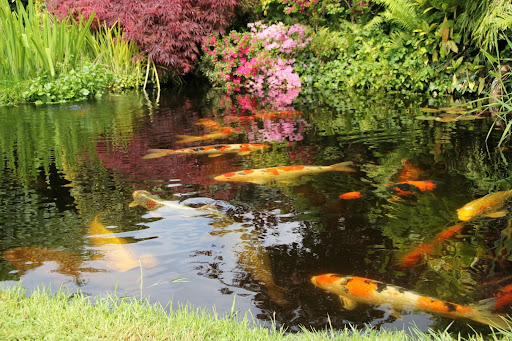Creating a fish pond in your garden is not just an aesthetic addition but a vibrant ecosystem that brings life and tranquility to your outdoor space. Whether for the serene beauty of koi gliding through the water or the joy of cultivating a natural habitat, building a fish pond can be a deeply rewarding project. This comprehensive guide, designed for beginners, outlines ten essential steps to create a sustainable and thriving fish pond.
1. Planning and Design
The first step in building a fish pond is planning. Consider the primary purpose of your pond, the types of fish you wish to keep, and the overall aesthetic you aim to achieve potentially integrating unique features. The location is crucial; ideally, choose a spot that receives partial sunlight, which helps aquatic plants thrive while minimizing algae growth. Avoid areas under trees to reduce leaf litter. Design your pond with varying depths: shallow areas for plants and deeper zones (at least 3 feet) for fish to overwinter safely.
2. Excavation
With your design in hand, mark the outline of your pond using stakes and string. Excavation requires careful digging according to your plan, maintaining sloped sides for structural integrity. For those opting for a preformed liner, ensure the excavation matches its dimensions precisely.
3. Liner Installation
Choosing the right liner is vital for your pond’s longevity. Flexible liners offer versatility for custom shapes, while preformed liners are great for smaller, standard ponds. Ensure the liner fits snugly into the excavation, with extra material around the edges to secure it in place.
4. Water Filtration and Circulation
A healthy pond requires a filtration system to remove debris and excess nutrients, and a pump to circulate water, ensuring oxygenation for fish and plant health. The size and type of your system will depend on the pond’s volume and the fish load. For inspiration on integrating these elements seamlessly, explore resources like koi pond Malaysia, which highlight efficient and aesthetic designs.
5. Filling the Pond
Once the structural components are in place, it’s time to fill your pond. If using tap water, it may need to be treated to remove chlorine or chloramines, which are harmful to fish. Allow the pond to settle for a few days before introducing plants or fish.
6. Adding Plants
Aquatic plants play a crucial role in the pond ecosystem, providing oxygen, shelter, and food for fish while absorbing nutrients that could fuel algae growth. Incorporate a mix of submerged, marginal, and floating plants to create a balanced environment.
7. Introducing Fish
When the pond is ready, you can start introducing fish. Begin with a few hardy species to ensure the pond’s ecosystem is stable. Goldfish and koi are popular choices for their beauty and resilience. Remember, the number of fish your pond can support is determined by its size and the efficiency of your filtration system. For a detailed guide on creating a balanced fish habitat, consider visiting fish pond.
8. Pond Maintenance
Regular maintenance is key to a healthy pond. This includes monitoring water quality, managing fish health, pruning plants, and cleaning the filtration system. Seasonal maintenance is also important, such as preparing the pond for winter and revitalizing it in spring.
9. Enjoy Your Pond
With the hard work behind you, take time to enjoy the beauty and serenity of your new pond. It’s a living landscape that offers endless moments of peace and interaction with nature. Observing the fish, listening to the water, and watching the plants flourish provides a unique sense of satisfaction.
10. Continuous Learning
Building and maintaining a fish pond is an ongoing journey of discovery and learning, enriched by engaging with both online communities and local hobbyist groups. These interactions open up a treasure trove of knowledge, from basic upkeep to intricate design and water quality management. Through sharing experiences and challenges, you gain insights into innovative techniques that can significantly enhance the vitality and aesthetics of your pond. Experimentation and keen observation become key, as each pond presents its unique ecosystem to understand and nurture. This process not only deepens your knowledge of aquatic life but also fosters an appreciation for the delicate balance of nature within your own backyard.
Conclusion
Building a fish pond is a fulfilling project that can transform your garden into a haven of tranquility and natural beauty. By following these ten steps, you can create a sustainable ecosystem that not only supports fish and plant life but also provides a peaceful retreat from the hustle and bustle of daily life. Remember, patience and ongoing learning are key to cultivating a thriving pond that will bring joy for years to come. For those seeking a partner to build a fish pond, Konzept Garden is an excellent choice, specializing in designing and constructing bespoke fish ponds with a focus on harmonious aesthetics and functionality, ensuring expert guidance from the initial concept through to completion.





Be First to Comment